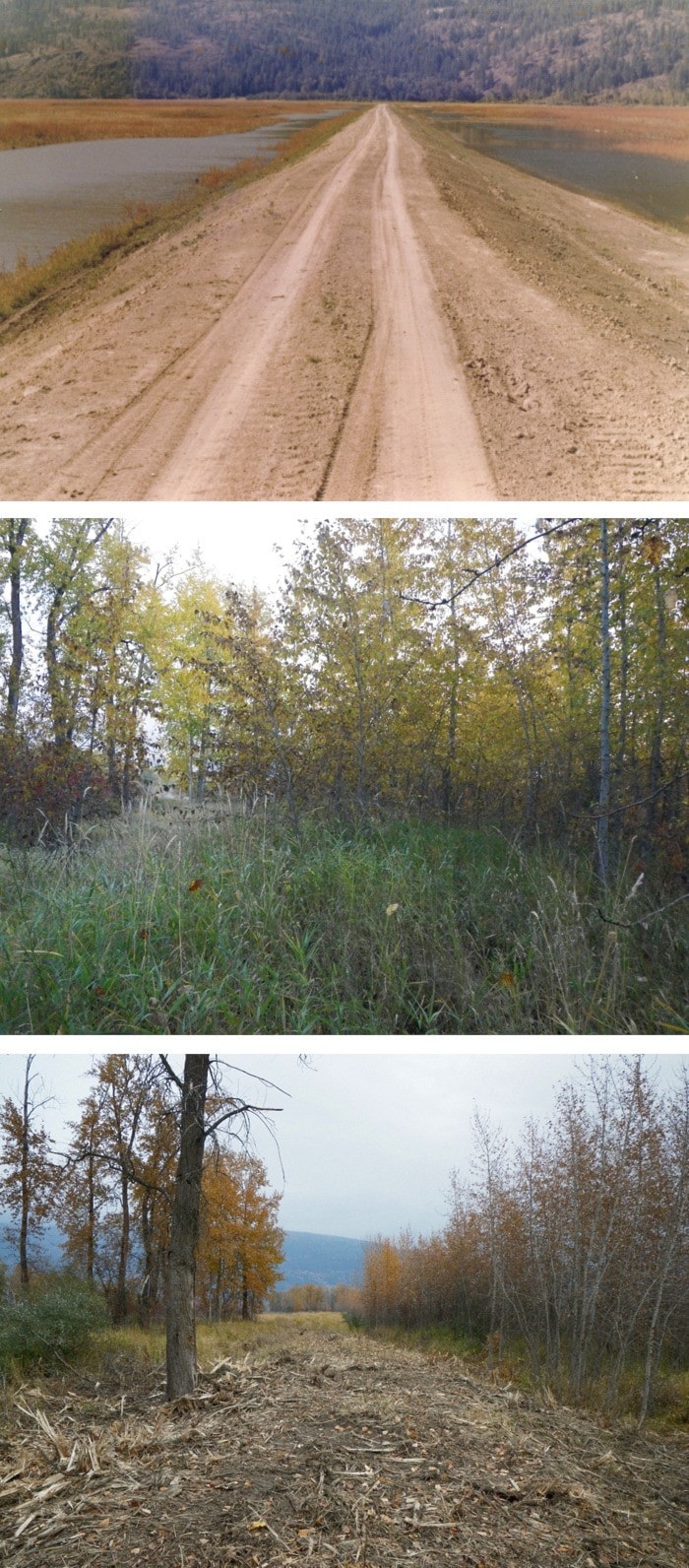Dikes are important structures in flood protection. And at the Creston Valley Wildlife Management Area, they are also utilized to manage water levels within the various pond units. It is extremely important that the dikes are maintained and inspected to ensure they are structurally sound and working properly. With over 30 kilometres of dikes within the CVWMA, it is a big job.
Vegetation management on dikes in Leach Lake and Corn Creek was undertaken in October/November 2011. The CVWMA conducted this vegetation management in accordance with the B.C. government’s “Environmental Guidelines for Vegetation Management on Flood Protection Works to Protect Public Safety and the Environment”. These vegetation management guidelines for flood protection dikes are determined by the public safety need for visibility for inspection, access for efficient operation and maintenance and minimization of detrimental effects to dike fills and bank protection. The CVWMA encourages the public to check out this document for further information as to why it needs to manage vegetation around the dikes.
When the dikes were first constructed at the CVWMA in the early 1970s, there was no vegetation cover along the sides or anywhere near the dikes. Over the years, vegetation has colonized the side slopes of the dikes in certain areas. Brushing, which involves the removal of this vegetation cover along the side slopes of the dikes, has taken place on various dikes over the years. Some dikes have not been brushed for several years and as a result, thick shrubs and large trees have grown on the side slopes in many areas. This has been posing operational hazards for CVWMA staff and has made it very difficult to visually inspect the dikes for leakages and conduct dike repairs.
So, dike brushing was undertaken in the fall to remove the vegetation off the side slopes along dikes in Leach Lake and Corn Creek to increase visibility for dike inspection, and to provide better and safer access for efficient operation and maintenance of the dikes.
Significant leaks were found along dike 3 in Corn Creek Marsh and dike 5 in Leach Lake north of pond 4 during the spring of 2011, and repairs will be required. Section of dike 5 at Leach Lake had large trees growing right on the crest and the dike was no longer accessible.
While dikes in Corn Creek and Leach Lake are not considered flood protection works, they are utilized to manage water levels within the pond units. So, it is important that they are in good repair.
Some concerns have been raised over bird nesting habitat being removed. It must be kept in mind that the structural integrity of the dikes is very critical to preserving the remaining wetland and that the dikes are artificial structures that were not intended to bear vegetation from the time they were constructed. Woody vegetation encroachment is threatening wetland habitat in many areas and is negatively affecting several species such as the short-eared owl, black tern, and red-winged blackbird. Also, woody vegetation encroachment, such as trees and shrubs, on wetlands provides perches for predators such as red-tailed hawk, ravens, eagles and others, and for parasitic species such as the brown-headed cowbird. Predator species often prey on waterfowl nests and broods.
This brushing work was conducted well outside the nesting period so that bird species would not be affected. The amount of vegetation removed is fairly insignificant compared with the amount still present in the area and within the greater CVWMA property.
The CVWMA does acknowledge the fact that the brushing is not aesthetically pleasing at this time and will be working to improve the situation by cleaning up any debris that is along the top of the dikes as soon as the weather permits. In the meantime, please exercise caution and do not venture off the dikes into the recently brushed areas.
For more information, contact the CVWMA at 250-402-6900 or askus@crestonwildlife.ca.
— CRESTON VALLEY WILDLIFE MANAGEMENT AUTHORITY
